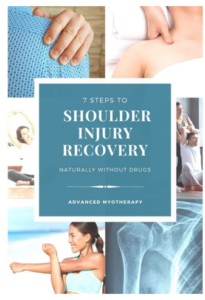Healing Frozen Shoulder: A Guide to Recovery
Frozen shoulder, or adhesive capsulitis, is a painful condition that causes stiffness and limited range of motion in the shoulder. While the healing process can be slow and frustrating, with the right approach, it is possible to improve mobility and reduce discomfort. In this article, we will discuss how to heal a frozen shoulder, how long it typically takes for recovery, and the various treatment options that can aid in healing, including how Curapod can support the healing process.
How Long Does it Take for a Frozen Shoulder to Heal?
The time it takes for a frozen shoulder to heal varies from person to person, depending on the severity of the condition and the treatment approach. On average, it can take anywhere from 1 to 3 years for the shoulder to fully heal. The recovery process is typically broken down into three stages:
- Freezing Stage: This is the painful phase, where the shoulder becomes stiff and movement becomes limited. It can last between 6 weeks to 9 months.
- Frozen Stage: In this stage, pain may decrease, but the stiffness persists, and movement is significantly reduced. This phase can last between 4 to 12 months.
- Thawing Stage: This is the recovery phase, where the shoulder slowly regains its range of motion. This phase can last anywhere from 6 months to 2 years.
Does Frozen Shoulder Heal on Its Own?
In many cases, frozen shoulder can improve on its own with time. However, the process is often slow and can lead to prolonged discomfort and difficulty performing daily activities. Without treatment, the condition may remain static, but the pain and stiffness could gradually diminish as the shoulder naturally thaws. Although it might resolve on its own, active treatment can help speed up recovery and improve overall function.
Healing a Frozen Shoulder Naturally
Many people seek natural remedies to help heal frozen shoulder more effectively. Some of the most common natural healing methods include:
- Stretching and Exercise: Regular, gentle stretching exercises are essential to maintain or increase the shoulder’s flexibility and range of motion. Exercises such as pendulum swings, wall crawls, and external rotation stretches can help keep the shoulder moving and prevent further stiffness.
- Heat and Cold Therapy: Applying heat to the affected shoulder can help loosen tight muscles and improve blood circulation, which is essential for healing. Ice packs can help reduce inflammation and manage pain, especially in the early stages of frozen shoulder.
- Massage Therapy: Gentle massage around the shoulder can help improve blood flow and reduce tension, aiding in the healing process.
- Epsom Salt Baths: Soaking in a warm bath with Epsom salts can help relax the muscles, alleviate pain, and reduce inflammation, which supports recovery.
Treatment for Healing Frozen Shoulder
While natural methods can aid healing, active treatment is often required for effective and faster recovery. Some of the common treatments for healing frozen shoulder include:
- Physical Therapy: A key component of treatment is physical therapy, which involves specific exercises to improve range of motion and strength in the shoulder joint. A therapist will guide you through exercises to stretch and strengthen the shoulder, reducing stiffness and restoring function.
- Corticosteroid Injections: For more severe pain, corticosteroid injections may be used to reduce inflammation and provide short-term relief.
- Manipulation Under Anesthesia: In cases where conservative treatments fail, a doctor may perform manipulation under anesthesia, a procedure where the shoulder is gently moved to break up adhesions, followed by physical therapy.
Curapod Can Help with Frozen Shoulder Recovery
Curapod, a device that uses electrical stimulation, can be an excellent tool in healing frozen shoulder. Here’s how Curapod can support the recovery process:
- Pain Relief: Curapod delivers electrical impulses that help block pain signals and stimulate the body’s natural pain-relieving mechanisms. This can significantly reduce the pain associated with frozen shoulder, allowing patients to engage in physical therapy exercises and improve mobility without discomfort.
- Muscle Relaxation: One of the primary benefits of Curapod is its ability to relax muscles. Frozen shoulder often causes tightness and muscle spasms around the shoulder joint. Curapod‘s electrical stimulation helps to reduce these spasms and increase shoulder flexibility, which aids in restoring full range of motion.
- Improved Circulation: Curapod enhances blood circulation in the affected shoulder, which is crucial for speeding up the healing process. Increased blood flow helps deliver oxygen and nutrients to the tendon, supporting tissue repair and reducing inflammation.
- Complementary to Physical Therapy: Using Curapod before or after physical therapy can enhance the effectiveness of your rehabilitation. It can reduce pain, improve muscle relaxation, and prepare the tendon for exercises, making the entire recovery process more efficient.
References (Cardiff Harvard Style)
- Mayo Clinic, 2025. Frozen Shoulder: Symptoms and Causes. Available at: https://www.mayoclinic.org/diseases-conditions/frozen-shoulder/diagnosis-treatment/drc-20370892 [Accessed 28 February 2025].
- American Academy of Orthopaedic Surgeons (AAOS), 2025. Frozen Shoulder: Symptoms, Causes, and Treatment. Available at: https://www.aaos.org/diseases–conditions/frozen-shoulder/ [Accessed 28 February 2025].
- Spine-Health, 2025. Frozen Shoulder Treatment and Exercises. Available at: https://www.spine-health.com/conditions/shoulder-pain/frozen-shoulder [Accessed 28 February 2025].


